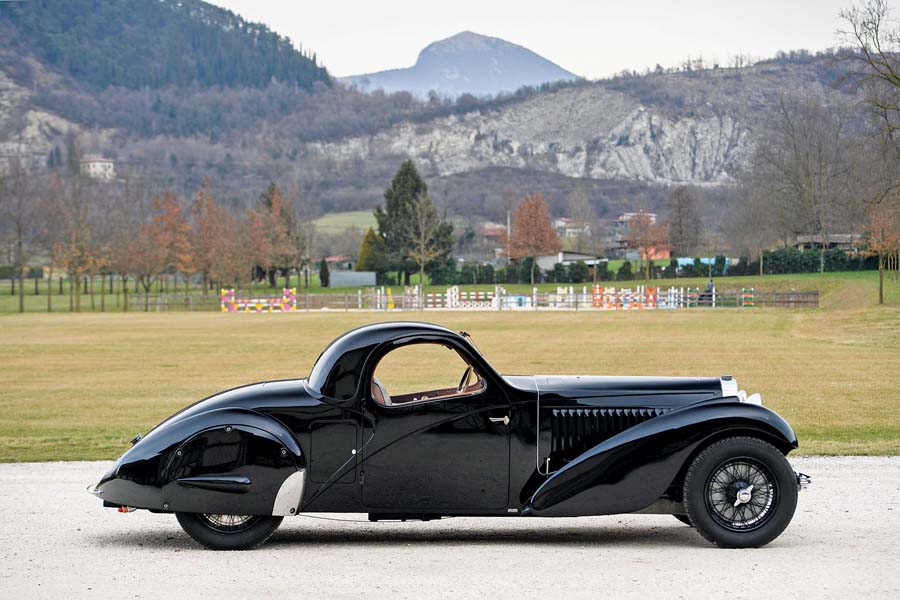Chassis Number: 57254
Of all the factory-penned body styles built on Bugatti’s Type 57 chassis, perhaps none is as significant as the Atalante. The Type 57 Atalante is much rarer than the Stelvio, Ventoux or Galibier, and the design’s purposeful lines and proportions (credited to Jean Bugatti but perfected by in-house stylist Joseph Walter) provided sportier packaging for the 57’s advanced dual-overhead-cam engine and independently sprung chassis.
Exceeded in cachet today only by the Type 57SC Atlantic, the Atalante is overwhelmingly regarded as the most sporting iteration of the celebrated Type 57.
Chassis 57254 is one of the earliest Atalante examples built, being one of four prototypes of the rare body style. Bugatti originally designated this model as the “faux-cabriolet,” and this is how 57254’s body style is described in factory production records. Technically the third Atalante built, though bearing the second-lowest chassis number of the four, 57254 was assembled in the spring of 1935, ultimately one of just 10 examples built that year. Only three are still known to exist, of which this car is undoubtedly the most original.
Currently displaying just 25,733 kilometers (15,989 miles) of actual use, this rare Bugatti has never left France, and accrued only 700 of those miles over the past 60 years. After a color change to two-tone black and red during a Mr. Dubreuil’s tenure, the car has now been repainted in its original monochromatic finish.
Other than this alteration, the T57 is almost entirely original, including the original body panels stamped with the number 3 (representing the third Atalante produced). Also retaining the original matching-numbers engine and unmodified cable-actuated brakes, 57254 features its original door panels, seat back, and proper leather seat bottom in the original tan color, original gauges, and the extremely rare original factory-issued toolkit.
This distinctive early Atalante is documented with factory paperwork, former owners’ correspondence, period articles and photographs, and a history with inspection notes by marque expert Pierre-Yves Laugier.
Originally owned by the legendary Meo Costantini and ideally preserved by a single French family for 62 years, this extremely rare factory-bodied Atalante has been optimally prepared for future touring use or presentation at finer concours d’elegance the world over.

